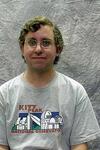David Rahmlow
Certain aspects of electroweak parity violation can be explored in atoms and molecules using techniques common in atomic and molecular physics. Parity-nonconserving interactions between an s-state electron and the nucleus can mix electronic states of opposite parity; precise measurement of the electronic wave-function provides information about the underlying physics. The experiment described here is intended to study nuclear spin-dependent parity-nonconserving (NSD-PNC) interactions, which are related to the Standard Model constants describing the coupling of the Z0 boson to the proton and neutron (C2p and C2n) and to the nuclear anapole moment. The effect of these interactions is enhanced in certain atoms or molecules in which two levels of opposite parity are close to degeneracy. This condition can be most easily achieved in diatomic molecules by using the Zeeman effect to bring sublevels of the two lowest rotational energy levels close to crossing. Progress towards this goal is described, based on measurements of Stark effect-induced level crossings in barium monofluoride.
